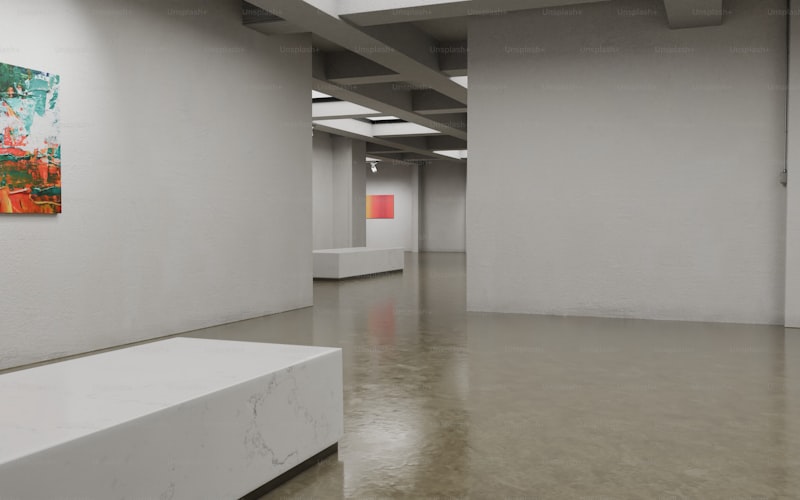Exploring the World of Contemporary Art Installations: A Journey Through Modern Creativity
Introduction to Contemporary Art Installations
Contemporary art installations have become a significant aspect of today's art scene, captivating audiences with their innovative approaches and thought-provoking messages. These installations often combine various artistic mediums and invite viewers to engage with them, transforming traditional art appreciation into an interactive experience. In this article, we will dive into what contemporary art installations are, their significance, various forms, notable artists, and much more.
What Are Contemporary Art Installations?
At its core, a contemporary art installation is a three-dimensional artwork designed to transform a specific space. Unlike traditional artworks that are meant to be viewed individually, installations often invite viewer interaction and manipulation. This type of art can incorporate various materials and techniques, making it a versatile and dynamic form of expression.
Key Characteristics of Contemporary Art Installations
- Interactivity: Many installations require the audience to participate, creating a shared experience.
- Site-Specificity: Installations are often tailored to a particular space, enhancing the dialogue between the work and its environment.
- Multimedia Use: Artists frequently incorporate videos, sound, and digital elements in their installations.
- Conceptual Depth: The themes explored in installations tend to address social, political, or environmental issues.
The Evolution of Art Installations
The history of art installations can be traced back to the 1960s, evolving alongside movements such as Minimalism and Conceptual Art. Artists began to challenge the boundaries of traditional art forms, leading to what we now recognize as contemporary installations. This evolution has resulted in a diverse array of styles and practices that continue to push the limits of creativity.
Notable Contemporary Artists and Their Installations
Some artists have risen to prominence for their unique and impactful installations. Below are a few noteworthy names:
| Artist | Installation | Location |
| Yayoi Kusama | Infinity Mirror Rooms | Various Museums Worldwide |
| Olafur Eliasson | The Weather Project | Tate Modern, London |
| Christo and Jeanne-Claude | Running Fence | California, USA |
Each of these artists uses space, light, and materials in innovative ways, creating experiences that resonate emotionally with audiences.
Popular Themes in Contemporary Art Installations
Contemporary art installations frequently explore pertinent themes, including:
- Identity: Many installations delve into issues of gender, race, and cultural identity.
- Environment: Artists often address ecological concerns, encouraging reflection on climate change and sustainability.
- Technology: The influence of digital technology on human experiences is a recurring topic.
- Society and Politics: Installations can serve as social commentaries, critiquing power structures and societal norms.
How to Engage with Contemporary Art Installations
Engaging with contemporary art installations can be a rewarding experience. Here are some ways to immerse yourself in this dynamic art form:
- Visit Museums and Galleries: Look for exhibitions featuring contemporary installations in local museums and galleries.
- Participate: Don’t hesitate to interact with the installations; many are designed to be touched or explored.
- Educate Yourself: Research the artists and their concepts to gain a deeper understanding of the works.
- Attend Workshops: Many institutions offer workshops on creating your own installations, enabling hands-on learning.
Future of Contemporary Art Installations
The future of contemporary art installations is likely to be shaped by advancements in technology, social shifts, and ongoing global concerns. Artists today are increasingly using virtual reality and augmented reality, enriching the interactive aspects of installations. Moreover, as more people become aware of issues like climate change, we can expect to see installations that challenge audiences to think critically about their role in the world.
Finding Inspiration in Contemporary Art Installations
If you are an aspiring artist or simply interested in creating your own installations, start by exploring your surroundings for inspiration. Natural and urban environments offer unique perspectives that can fuel creative thoughts. Consider the materials available to you—recycling and repurposing items can lead to innovative installations that reflect your environmental awareness.

Conclusion and Recommendations
Contemporary art installations will continue to be a powerful medium for artists around the world, providing platforms for dialogue and reflection. As you engage with these works, remain open to experiences that challenge your perspectives and provoke thought. Make it a point to participate in local exhibitions or online forums discussing contemporary installations. Always remember, art is not just something to be observed; it's something to be experienced and shared.
In summary, contemporary art installations are a vibrant and crucial part of the art world that provoke feelings and thoughts and encourage participation. Whether you're an artist seeking to create your own installations or an art lover looking to appreciate the current landscape of contemporary art, understanding the essence and execution of installations will enrich your experience.